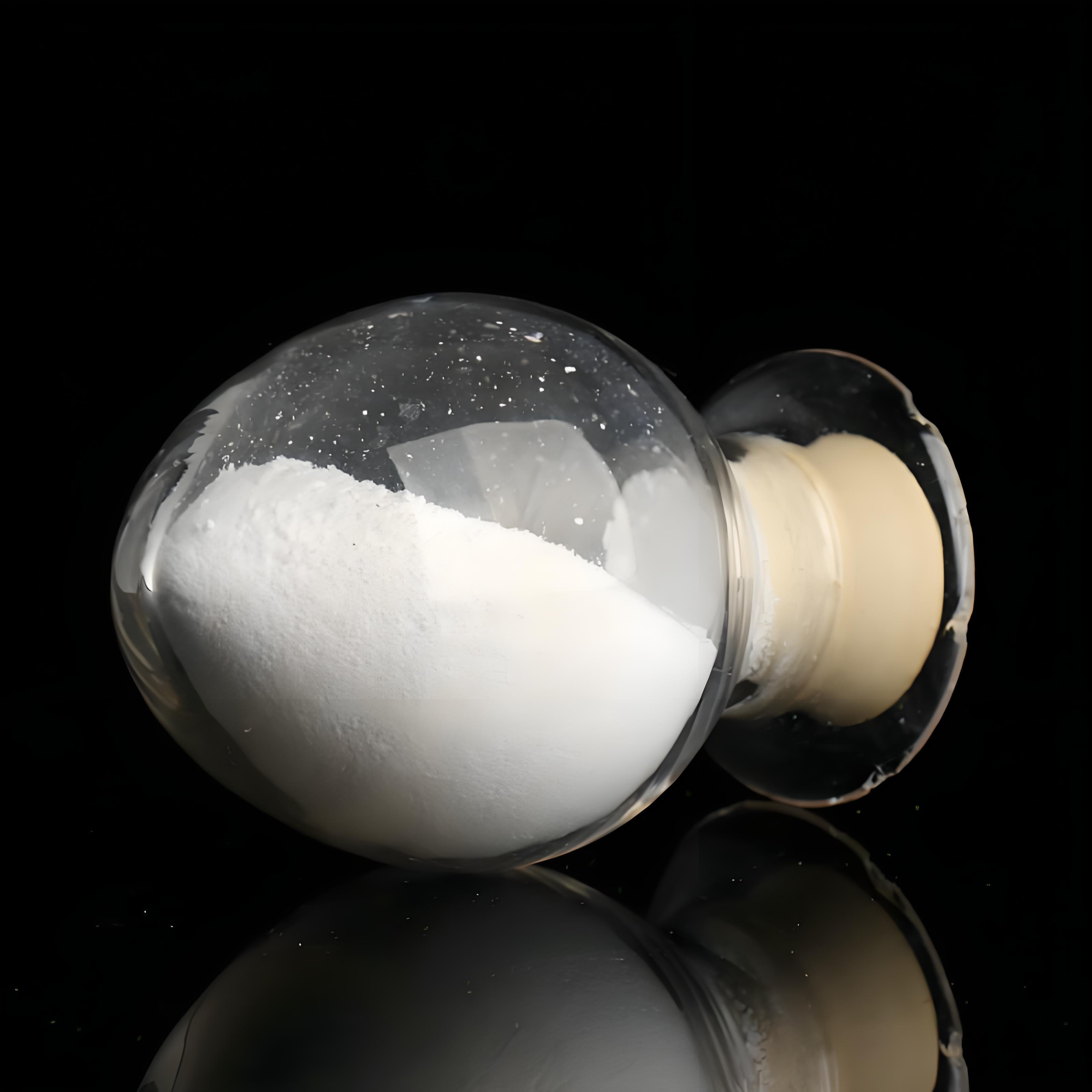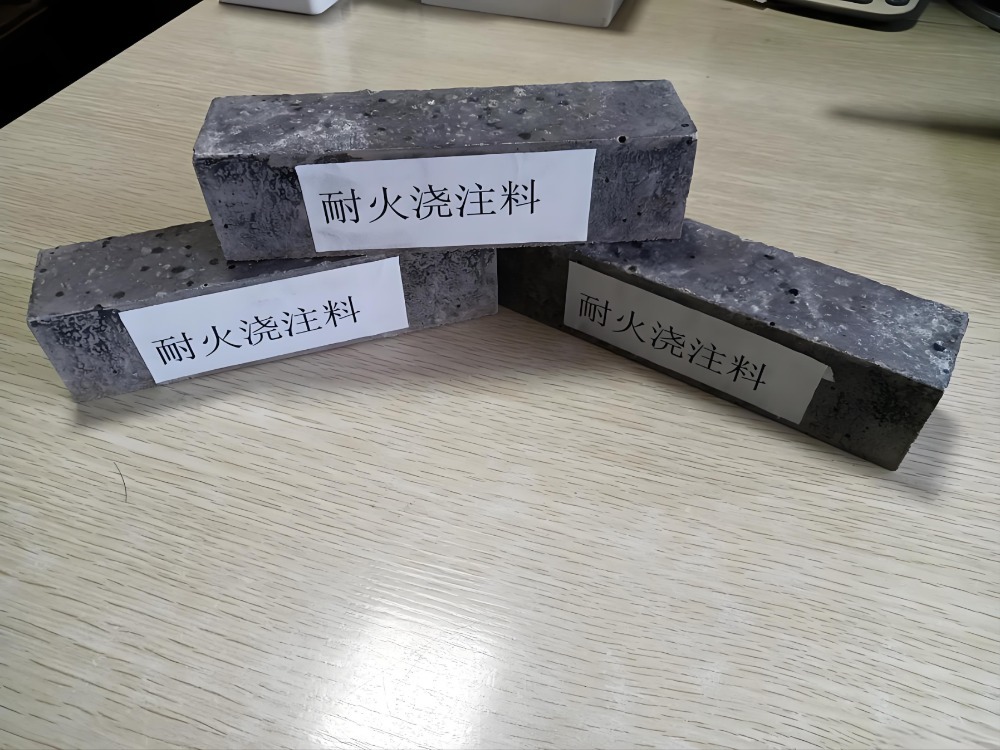The application proportion of magnesium oxide in the field of refractory materials and related analysis.
Release time:
2025-02-13
Magnesium oxide (MgO), as an important inorganic compound, holds a significant position in various industrial fields due to its unique physical and chemical properties. Structurally, it belongs to the category of ionic crystals, where magnesium ions are tightly bound to oxide ions through ionic bonds, endowing magnesium oxide with a series of excellent properties.
The application proportion and related analysis of magnesium oxide in the field of refractory materials
1. Overview of the basic properties and applications of magnesium oxide

2. The application principles and advantages of magnesium oxide in refractory materials

(1) Application principles
- Realization of high-temperature stability: In the refractory material system, the high melting point of magnesium oxide is the basis for its key role. When refractory materials are in high-temperature environments, magnesium oxide can maintain its solid state, preserving the structural integrity of the material. For example, in a steelmaking converter, temperatures can exceed 1600°C, and magnesium oxide, due to its high melting point, will not easily melt at such high temperatures, thus providing a reliable high-temperature protective layer inside the converter.
- The role of chemical stability: During high-temperature smelting processes, various corrosive slags and gases are produced. The chemical stability of magnesium oxide allows it to resist the erosion of these substances. Taking the iron smelting blast furnace as an example, the slag contains various oxides and sulfides that are corrosive; magnesium oxide has a low tendency to chemically react with these substances, allowing it to resist slag erosion for a long time, ensuring the service life of refractory materials.
- The relationship between crystal structure and performance: The crystal structure of magnesium oxide also has an important impact on its refractory performance. Its ionic crystal structure results in strong binding forces between ions, making it difficult for thermal vibrations of ions to destroy the crystal structure at high temperatures. Moreover, appropriate crystal defects and lattice distortions can further enhance the high-temperature performance of magnesium oxide. For example, by doping a small amount of other metal oxides, lattice defects can be introduced, enhancing the thermal shock resistance of magnesium oxide, making it less likely to crack under rapid temperature changes.
(2) Advantages
- High refractoriness: The high melting point of magnesium oxide determines its extremely high refractoriness in refractory materials. Compared to other refractory materials, such as alumina (melting point about 2054°C), magnesium oxide can withstand higher temperatures, making it irreplaceable in ultra-high-temperature industrial furnaces. In critical areas of glass melting furnaces, such as pool walls and furnace tops, using refractory materials containing magnesium oxide can effectively resist the scouring of high-temperature glass liquid and flames around 1700°C, extending the service life of the melting furnace.
- Good slag resistance: Magnesium oxide has excellent resistance to various slags. This is because magnesium oxide has low chemical reactivity with most slag components, allowing it to form a relatively stable protective film on the material's surface, preventing further penetration and erosion by the slag. In the non-ferrous metal smelting process, different types of slag can be highly corrosive to refractory materials, but magnesium oxide refractory materials can effectively resist this erosion, ensuring the smooth progress of the smelting process.
- Good thermal shock stability: In actual industrial production, furnaces often face rapid temperature changes, which require refractory materials to have good thermal shock stability. Magnesium oxide can achieve good thermal shock stability through reasonable formulation design and process treatment. For example, adding appropriate amounts of additives such as yttrium oxide to magnesium oxide refractory materials can improve the thermal expansion coefficient and toughness of the material, making it less likely to crack or spall during sudden temperature changes, thus enhancing the overall service life of the refractory materials.
3. Analysis of the actual application proportion of magnesium oxide in the field of refractory materials
(1) Traditional views and data sources

(2) The complexity of actual proportion situations
- Differences in different regions: Although the approximate data of 80% exists overall, there are significant differences in the application proportion of magnesium oxide in refractory materials across different regions. In some industrially developed regions dominated by high-temperature industries such as steel and non-ferrous metal smelting, such as Hebei and Liaoning in China, as well as the Pittsburgh area in the United States, the application proportion of magnesium oxide in refractory materials may exceed 80%. This is because the high-temperature industries in these regions have a huge demand for refractory materials, and magnesium oxide, as a high-quality refractory raw material, naturally has a higher consumption. In contrast, in regions primarily focused on light industry or with relatively underdeveloped industrial sectors, the application proportion of magnesium oxide in refractory materials may be relatively low, possibly only 50% - 60%, due to the smaller scale of demand for high-temperature refractory materials.
- Changes over timeFrom a temporal perspective, the application proportion of magnesium oxide in the field of refractory materials is not static. With the development of industrial technology and the adjustment of industrial structure, this proportion is also undergoing dynamic changes. In the past, traditional high-energy-consuming industries such as steel and cement developed rapidly, leading to a sharp increase in the demand for refractory materials. As a major raw material for refractory materials, the application proportion of magnesium oxide also rose accordingly, exceeding 80% during certain periods. However, in recent years, with the global emphasis on environmental protection and sustainable development, the development of some high-energy-consuming industries has been restricted, while the research and application of new refractory materials and alternative raw materials have led to a certain downward trend in the application proportion of magnesium oxide in the field of refractory materials. Nevertheless, overall, due to the large demand base for magnesium oxide in the refractory materials industry, its proportion still remains at a high level, close to 80%.
(3) Analysis of Factors Affecting Proportion
- Development of the Refractory Materials IndustryThe development status of the refractory materials industry itself plays a key role in the application proportion of magnesium oxide. With the continuous development of high-temperature industries such as steel, non-ferrous metals, glass, and cement, the performance requirements for refractory materials are constantly increasing, and the demand scale is also expanding. As an important raw material for refractory materials, the consumption of magnesium oxide has also increased accordingly. For example, in recent years, the steel industry has upgraded the refractory materials for converters and electric furnaces to improve production efficiency and product quality, increasingly using high-quality refractory materials with a higher magnesium content, thereby promoting the application of magnesium oxide in the field of refractory materials.
- Development of Other Application Fields of Magnesium OxideThe development of other application fields of magnesium oxide can also affect its proportion in refractory materials. If the demand for magnesium oxide in fields such as the chemical industry, pharmaceutical industry, and building materials grows rapidly, it will divert some of the consumption of magnesium oxide, leading to a relative decrease in its proportion in refractory materials. For example, with the increase in environmental protection requirements, the application of magnesium oxide in wastewater treatment has gradually increased. As an efficient alkaline neutralizer, magnesium oxide can be used to adjust the pH of wastewater and remove heavy metal ions. This newly added demand will have a certain impact on the proportion of magnesium oxide in the field of refractory materials.
- Research and Application of Alternative MaterialsThe research and application of new refractory materials and alternative raw materials are important factors affecting the application proportion of magnesium oxide in the field of refractory materials. In recent years, some new ceramic materials and carbon-based materials have been increasingly applied in the field of refractory materials. For example, silicon carbide ( ) refractory materials have excellent high-temperature strength, thermal conductivity, and erosion resistance, and can replace some magnesium oxide-containing refractory materials in certain specific high-temperature application scenarios. In addition, some industrial waste materials such as steel slag and coal gangue can also be used as raw materials for refractory materials after treatment, which has also reduced the dependence on magnesium oxide to a certain extent, thereby affecting its application proportion in the field of refractory materials.
4. Specific Application Forms and Cases of Magnesium Oxide in Refractory Materials
(1) Specific Application Forms
- Magnesium Refractory BricksMagnesium refractory bricks are one of the most common application forms of magnesium oxide in refractory materials. They are made primarily from magnesium oxide through processes such as forming, drying, and high-temperature calcination. Depending on the magnesium oxide content, they can be divided into ordinary magnesium bricks ( content 80% - 85%), high-purity magnesium bricks ( content over 95%), etc. Ordinary magnesium bricks are widely used in the bottoms and walls of steelmaking open hearths, soaking pits, and heating furnaces; high-purity magnesium bricks are mainly used in key parts of glass melting furnaces and cement rotary kilns due to their higher refractoriness and erosion resistance.
- Magnesium Unshaped Refractory MaterialsThese materials include magnesium castables, magnesium ramming materials, and magnesium spray materials. Magnesium castables use magnesium oxide as aggregate and powder, adding an appropriate amount of binder and additives, which can be cast into shape after mixing with water on-site. They have advantages such as ease of construction and good integrity, and are often used for repairs and linings in metallurgical furnaces. Magnesium ramming materials are applied through strong ramming construction, suitable for areas with high density and strength requirements, such as electric furnace bottoms. Magnesium spray materials are sprayed onto damaged furnace surfaces using a spray gun for quick repairs, improving the service life of the furnace.
- Magnesium Insulation MaterialsMagnesium oxide can also be used to prepare magnesium insulation materials, such as magnesium insulation bricks and magnesium heat insulation boards. These materials maintain certain refractory properties while having good thermal insulation effects. Using magnesium insulation materials on the outer layer of industrial furnaces can reduce heat loss and improve energy utilization efficiency. For example, in ceramic kilns, using magnesium insulation bricks as the insulation layer of the kiln body can effectively lower the surface temperature of the kiln and reduce energy consumption.
(2) Application Cases
- Steel IndustryIn steelmaking converters, magnesium-carbon bricks are a widely used magnesium oxide-containing refractory material. Magnesium-carbon bricks are made from high-purity magnesium oxide and graphite as the main raw materials, bonded together with a binder. Magnesium oxide provides high refractoriness and slag resistance, while graphite imparts good thermal shock stability and electrical conductivity to the material. During the steelmaking process in converters, magnesium-carbon bricks can withstand the scouring and erosion of high-temperature molten steel and slag. Generally, a large steelmaking converter using magnesium-carbon bricks as the lining can have a service life of 1000 - 2000 heats. With continuous technological advancements, the service life of converter linings has been further improved through formula optimization and production process improvements, such as using high-purity magnesium oxide raw materials and adding antioxidants, with some advanced converters achieving lining lifetimes of over 3000 heats.
- Glass IndustryIn glass melting furnaces, electric fused magnesia bricks are key refractory materials. Electric fused magnesia bricks are made by melting magnesium oxide raw materials at high temperatures in an electric furnace and then casting them into shape. They have a dense structure and excellent resistance to glass liquid erosion. In the pool wall area of glass melting furnaces, electric fused magnesia bricks can effectively resist the scouring and erosion of high-temperature glass liquid, ensuring the normal operation of the furnace. Generally, a medium-sized glass melting furnace uses electric fused magnesia bricks as the lining of the pool wall, with a service life of 5 to 8 years. To extend the service life of electric fused magnesia bricks, the glass industry continuously develops new production technologies and improves usage processes, such as applying coating treatments on the surface of electric fused magnesia bricks to enhance their erosion resistance.
- Cement IndustryIn cement rotary kilns, magnesia-chrome bricks and magnesia-alumina spinel bricks are commonly used magnesium oxide-containing refractory materials. Magnesia-chrome bricks have good alkali resistance and high-temperature strength, allowing them to adapt to the complex chemical environment and high-temperature conditions inside cement rotary kilns. Magnesia-alumina spinel bricks exhibit excellent thermal shock resistance and erosion resistance. In the transition and firing zones of cement rotary kilns, using magnesia-chrome bricks and magnesia-alumina spinel bricks can effectively resist wear from high-temperature materials and erosion from alkaline gases. With increasing environmental protection requirements, the application of new refractory materials such as chromium-free magnesia-alumina spinel bricks in cement rotary kilns is gradually increasing to reduce the potential environmental hazards of chromium elements.
V. Development Trends and Prospects of Magnesium Oxide in the Refractory Materials Field
(1) Development Trends
- High PerformanceAs the performance requirements for refractory materials in high-temperature industries continue to increase, magnesium oxide refractory materials will develop towards high performance. This includes further improving refractoriness, erosion resistance, thermal shock stability, and other performance indicators. By using higher purity magnesium oxide raw materials, optimizing formula design, and improving production processes, such as introducing nanotechnology and micro-powder technology, magnesium oxide refractory materials with superior performance can be produced. For example, utilizing the small size effect and high reactivity of nano magnesium oxide particles can improve the microstructure of refractory materials and enhance their overall performance.
- Green and Environmentally FriendlyAgainst the backdrop of increasing global environmental awareness, the trend towards green and environmentally friendly development of magnesium oxide refractory materials is evident. On one hand, it involves reducing energy consumption and pollutant emissions during the production process of refractory materials and adopting cleaner production processes. On the other hand, it includes the development of chromium-free, low-fluorine, and other environmentally friendly magnesium oxide refractory materials. For example, developing chromium-free refractory materials primarily composed of magnesia-alumina spinel and magnesia-iron spinel to replace traditional magnesia-chrome bricks, thereby reducing the environmental hazards of chromium elements.
- Multi-functionalityIn the future, magnesium oxide refractory materials will possess more functions. In addition to traditional functions such as refractoriness and erosion resistance, refractory materials with self-repairing and intelligent monitoring capabilities will also be developed. For instance, by adding certain substances with self-repairing functions to magnesium oxide refractory materials, these substances can automatically fill cracks when micro-cracks occur in the refractory materials at high temperatures, restoring the integrity of the materials. At the same time, utilizing smart sensor technology, sensors can be integrated into magnesium oxide refractory materials to monitor parameters such as temperature and stress in real-time, predicting material damage in advance and achieving intelligent maintenance of the furnace.
(2) Prospects
- Sustained Market Demand GrowthDespite some uncertainties in global economic development, high-temperature industries such as steel, non-ferrous metals, glass, and cement, as foundational industries of the national economy, will continue to maintain a certain scale of development in the future. With the technological upgrades and capacity expansions in these industries, the demand for magnesium oxide refractory materials will continue to grow. Especially in emerging economies like China, India, and Brazil, the advancement of infrastructure construction and industrialization will drive the development of high-temperature industries, thus providing a broad market space for magnesium oxide refractory materials.
- Technological Innovation Brings OpportunitiesWith the continuous development of materials science, nanotechnology, and intelligent manufacturing, the magnesium oxide refractory materials industry will welcome more opportunities for technological innovation. New production processes, new formula designs, and new functional developments will continue to emerge, improving the performance and added value of magnesium oxide refractory materials and further expanding their application fields. For example, in the new energy sector, some high-temperature equipment has special requirements for the performance of refractory materials, and magnesium oxide refractory materials are expected to find applications in this field through technological innovation, opening up new growth points for industry development.
- Intensified International Cooperation and CompetitionIn the context of globalization, international cooperation and competition in the magnesium oxide refractory materials industry will become increasingly intense. On one hand, enterprises from various countries will strengthen technological exchanges and cooperation to jointly promote the development of the magnesium oxide refractory materials industry. On the other hand, competition in the international market will also become more fierce, requiring enterprises to continuously improve product quality and technical levels, reduce production costs, and enhance their competitiveness. At the same time, with the advancement of the "Belt and Road" initiative, Chinese magnesium oxide refractory material enterprises will have more opportunities to participate in international market competition and expand their overseas market share.
Key words:
Next Page
Recommend News
What is 3D printing metal powder?
2025-02-11
Comprehensive Analysis of Magnesium Fluoride
2025-02-10




